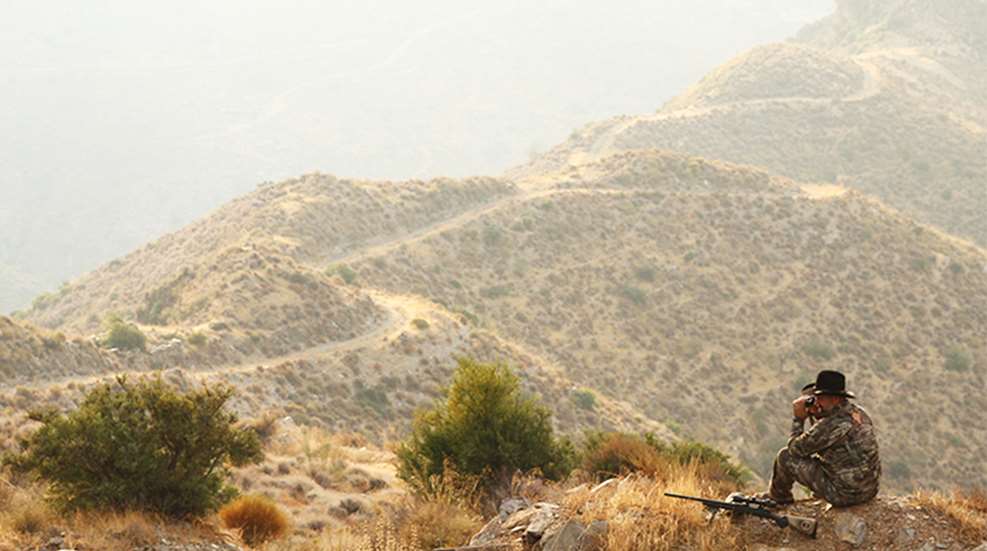
I’ll admit I’m a bit of a nationalist when it comes to hunting. That’s because most times when I leave the good ole USA to chase worldly critters, I’m often more glad to be home again than I was to leave. For me, the corruption in some countries that must be deftly navigated, the red tape of trophy exportation, the pitfalls of firearm laws and the anxiety associated with long hours of air travel often serve to spoil what would otherwise be a magical trip abroad.
Still, every now and again a chance to hunt some animal in some region of the world presents itself, and as a hunter who naturally yearns to peek over the next horizon, I can’t wimp out for fear of an airport hassle or two. One of those opportunities came in 2019 in the form of an ibex hunt in the southern portion of Spain. Here’s how it all went down … .
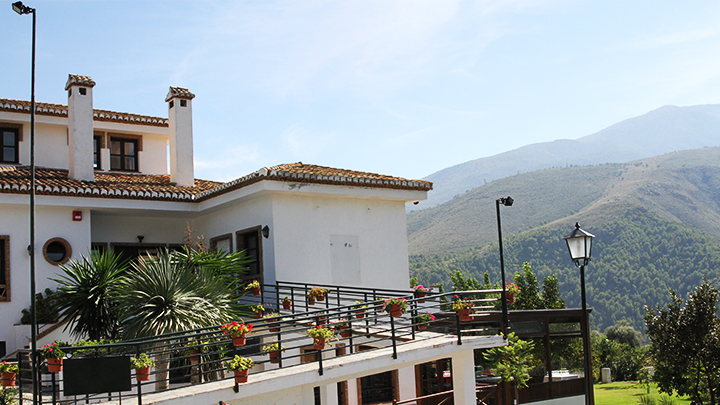
“Take it easy!” Rafa said late in the night as we burned up kilometers on Spain’s A-44 highway somewhere between Madrid and the Mediterranean. Rafa was driving a terribly uncomfortable white sprinter van while Chad, Walker and Nate were either snoozing or acting like it so they wouldn’t be dragged into a heated debate between my buddy John Snow and myself on American politics. That’s when Rafa—short for Rafael Carillo—being the smiling, easy-going hunting guide/bus driver/rifleman/translator/entertainer he is, offered a quick traveling tip, albeit in heavily accented English that was rough but far better than my Spanish. The phrase struck us as funny and caused a cessation of our argument over Bernie Sanders’ ridiculous policies.
“What did you say? Rafa?” I asked, holding my next point for Snow.
“I said, take it easy, man!” he said. “You know ... like the Eagles.”
In my travels I’ve found several things that can transcend cultural barriers, and one of them is music. Turns out Rafa was a huge fan of American classic rock, and in no time, he had his iPhone’s playlist streaming through the van’s speakers and cracking us up with his Spanish-accented, shower-singing flair fit for a Hong Kong karaoke competition. At any rate it was comic relief enough to place the political differences between me and Snow on temporary hold.
Hours later we arrived at a locally owned hotel and restaurant, which would be the place we’d rest our heads and order tapas after each day of hunting the region’s southeastern ibex. I knew very little about ibex before arriving in Spain, but Rafa gave me the crash course during the drive.
Ibex are essentially wild mountain-dwelling goats that are distributed across the European Alps and much of Asia. Adult males range in size from around 100 pounds (or 45 kilos) to several hundred, depending on the subspecies. Most have goatees, all have hooves for climbing rock and thick, segmented horns that sweep back over the males’ heads dramatically.
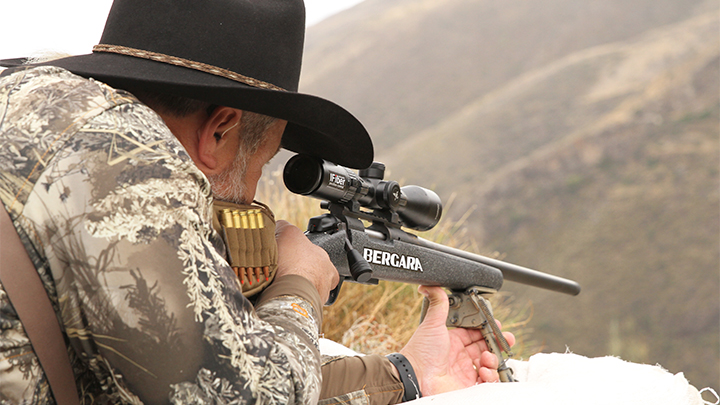
Spain boasts four native subspecies that all live in its regional mountain ranges. The Beceite ibex is the largest and is so named for the Beceite mountains in northeast Spain. The Gredos is the second-largest strain, found in west-central regions of the country. Then there’s the Ronda subspecies, the smallest in size, located near the southwest coastal mountains. Finally, there’s the southeastern ibex—the one we were after—that’s slightly bigger than the Ronda and found in the Sierra Nevadas and several other mountain ranges in southeastern Spain, right down to the jagged cliffs that guard the Mediterranean Sea.
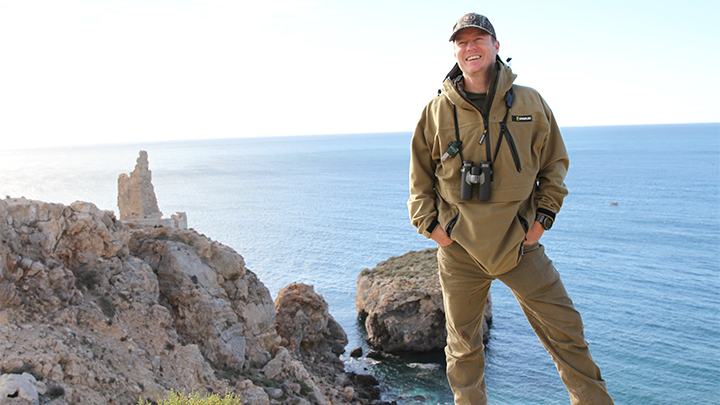
Much like the licensing system here, hunters must buy a hunting permit to take an ibex, but permits can also be obtained via licensed outfitters. And trust me, you want an outfitter who knows the language and the land that’s often crisscrossed by roads, private boundaries, farms and habitations. And that’s the main difference from hunting sheep in southern Spain, as opposed to, say, Dall sheep or big horns in our vast country back home where you might never see another trace of humanity. In my estimation, this is a simple product of Spain not having the sheer amount of country as we do, and so the game is not afforded hundreds of square miles of buffer between them and farms or even public beaches and highways. It’s just the way it is.
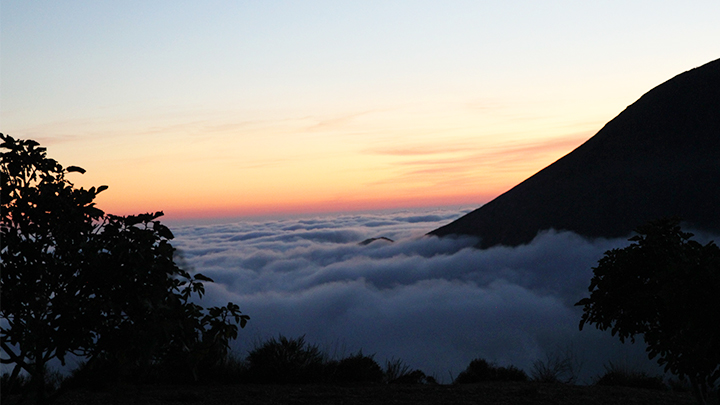
Plenty of times we’d corkscrew up a blacktop mountain highway, complete with guard rails, yellow stripes and road signs, while passing houses along the way only to stop as we’d find a vantage from which to glass into the deep canyons and valleys below. If you’re licensed to hunt the land—in this case the Sierra Nevada National Park—it makes no difference if you park, glass or even shoot from the shoulder of a road.
And that’s part of the lesson required of hunting any foreign country. Other folks often don’t do it like we do it, so I quickly learned to get over my shock if a guide expected me to do something that went against a legal compass that’s been ingrained in me from hunting the States since I was a whelp. For example, you could be asked to hop out of the car and go prone on the shoulder of the highway to shoot if you wish to kill a perfectly legal ibex below you. It’s a weird feeling, but so is shooting a deer while it’s eating corn from a feeder in Texas if you’re from Ohio.
In fact, Snow wound up taking his ibex while sitting against an old junk car in a sort of communal dump. It was effective, if not a little less romantic than he’d envisioned. Another guy in our group actually shot from one mountain, over a highway and a travel rest area to nail his ibex. Despite his protests, our local guides assured him it was legal—and also assured him he probably wouldn’t see a better ibex if he didn’t hurry up and shoot. Chad, a guy who’s hunted all over the world, looked totally out of whack when he was hastily instructed to shoot from the shoulder of an active highway. The ibex wound up getting away, but the point was taken, and it had all to do with the old adage about “while in Rome.” Perhaps I was the luckiest one of the bunch ... .
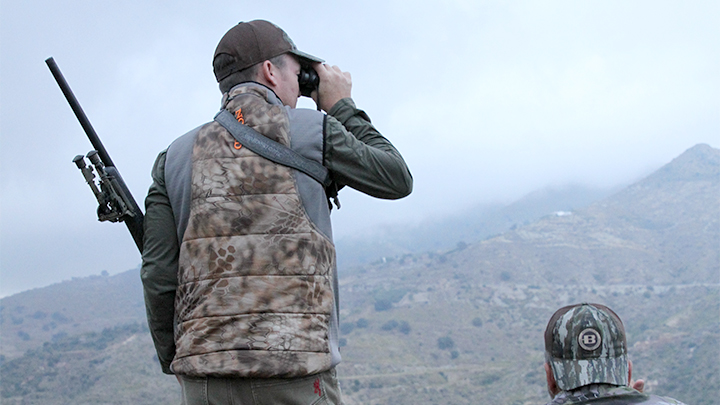
Just after dawn Chad, his son and cameraman Walker, Rafa and I stood glassing from a curve in a road overlooking a deep valley. Below and to the left were houses—complete with crowing chickens and barking dogs, and to the distant south was the Mediterranean Sea.
We were glassing in relative tranquilness when a truck pulling a trailer full of hounds rolled up behind us. They were local wild boar hunters doing their thing. After trading greetings, we hiked down the spine of a rocky ridge and soon came to a mountainous outcropping of rock. Moments after reaching its summit, Rafa pointed excitedly, the universal language for, “There’s one!”
A glance through the Swaros confirmed it; it was a big male ibex with dark, deeply grooved horns indicating his old age. He was feeding amid a harem of ewes, but considering the wind and our position over them, his position couldn’t have been much better for us.
Rafa spoke with a mere undulating motion of his hand, and I knew exactly what it meant, for this is another thing that transcends language: Hunters are hunters everywhere and I immediately knew Rafa meant we could slip over the rocks to gain a vantage then come over the top of the ibex for a shot. Using Rafa’s handloads, I’d dialed in my Bergara 6.5 Creedmoor to about 600 yards the day before, but if we did our part as hunters, I’d hardly need all that long-range firepower.
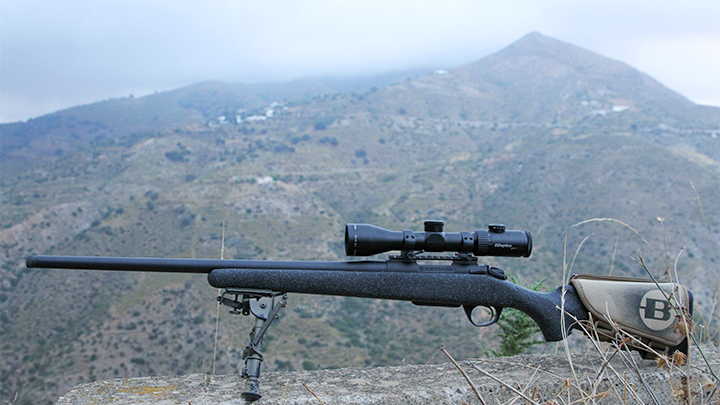
In a samba line with Walker running the camera, we slipped over and through the boulders and saw a few of the females filter through breaks in the scrub, approximately 125 yards below us. Knowing we were well within range and the ram was in the mix somewhere, I dropped to prone, got comfortable behind the rifle and waited. Seconds later, the massive old goat appeared and presented an acute quartering-away shot, so that the bullet would have to angle down through his left shoulder blade and hopefully out through the right side of his sternum. Having supreme confidence in the rifle and my rest, I saw no reason to wait for a better shot that may have never come. So I squeezed the trigger and was happy when the rifle’s lurch surprised me. The report echoed off the ancient Spanish mountainside.
Out of recoil and now back on the scope, I saw ibex scrambling and then saw the ram on the ground, kicking slightly. Chad slapped me on the back and Rafa said something in Spanish that I somehow understood. But moments later as I picked my way down the rocks, something just didn’t seem right. I couldn’t see the ibex where I thought he should be lying, and the closer I drew, the more it became apparent that he’d moved from the place where I’d shot him—where he’d gone down. Then, as I cornered a large bush I saw him, on the ground, 35 yards away. I let out a sigh of relief. But just as I relaxed and casually strode toward the animal to claim him, it received a charge of adrenaline and shot to its feet, very much alive. I raised the rifle for a snap shot but click!—I’d forgotten to reload after unloading when I first saw he was down!
We could hear the wounded animal scrambling down loose rocks, so I, too, hustled down the mountain parallel to the sounds, trying to stay within rifle range if he made the bottom of the canyon and multiple escape routes. But after a few seconds, I heard nothing. Keeping my eyes on the most obvious escape route, I motioned Rafa to walk down the left side of the gulch where I’d last heard the animal. As all four of us searched frantically, Rafa made it to a large boulder while the rest of us began closing in on his position. The ibex had to be close!
Suddenly Rafa hissed and pointed down just behind the scrub-surrounded boulder on which he stood. Although mortally wounded, the tenacious ram was hiding so effectively that he was impossible to see until I was mere feet away. Another shot finished him.
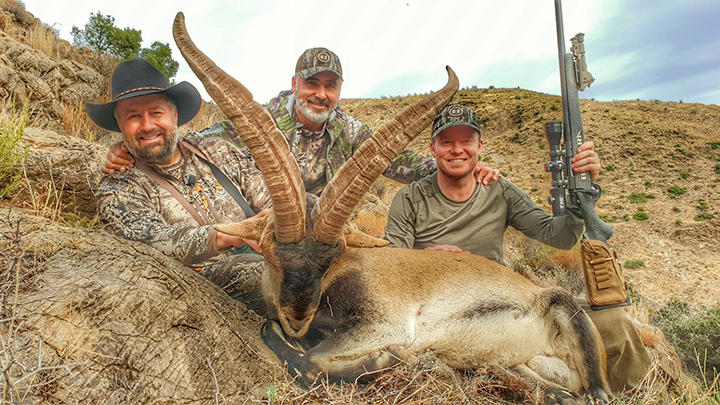
As I ran my hands over his coarse, pronghorn-like fur and richly grooved horns, we knelt in silence, admiring such a fine animal; with hats removed, Chad said a brief hunter’s prayer, thanking the ibex for its courage and for its life. And then, almost automatically, I reached out my hand to shake that of my Spaniard guide, who after several days and many miles over highways, hotels and hills was now more than just a guide but an amigo. Fact is, camaraderie among hunting companions—bonding over a sacred event—is also a universal language. The four of us didn’t say anything for a few moments, but instead just absorbed the moment afield.
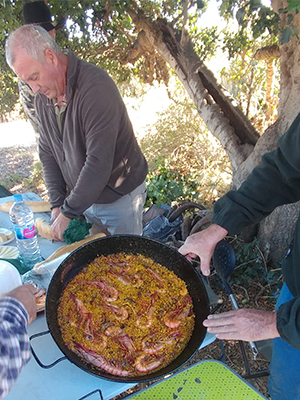
A few hours later, with Nate’s ram recovered on a picturesque plateau overlooking the sea—not all that far from the rock of Gibraltar—our Spanish hosts produced folding chairs, a makeshift table, cheese, wine, olives and a huge pan of olive oil that was heated over an open fire. In that popping-hot oil, giant, fresh-caught prawns and squid were sautéed then served over locally grown vegetables, garlic, saffron, onions and Spanish rice for one of the greatest meals I can recall ever having anywhere. Paella—pronounced “pie-ee-ah”—is the region’s signature dish and now remains one of my favorites.
The final language that transcends all cultural barriers, and is understood everywhere, is, of course, food. Add the emotion of a successful hunt, the curiosity of new friends, terrific weather and a little burgundy wine over the deep blue Mediterranean background, and we had all the ingredients for a brief fiesta, a celebration of the hunt. As I sat in the shade, eating, joking and feeling the sea breeze upon my face, I looked at Rafa, who was doing the same.
“Taking it easy?” he asked, smiling facetiously.
Sí, Sí, Rafa! Yes indeed.
As I returned home, I realized this Spanish hunt among good people had changed my mind some about traveling abroad. There are three more species of ibex among the Spanish mountains, and I someday hope to return there to hunt them.
Over the last decade Bergara has risen from little more than a maker of quality barrels to one of the best-value rifleman’s-rifles on the market today. While they are largely designed, marketed and sold in the States by the same Georgia company that sells CVA blackpowder products, Bergara rifles are produced in the historic gunmaking region of northern Spain in a smallish town named ... Bergara. I toured the entire factory for a glimpse of how the rifles are made, from CNC machining of the actions, boring, rifling and honing of the barrels, to bedding the stocks, final assembly and testing of each one for accuracy before shipping. Let me tell you, the factory is clean, precise and efficient.
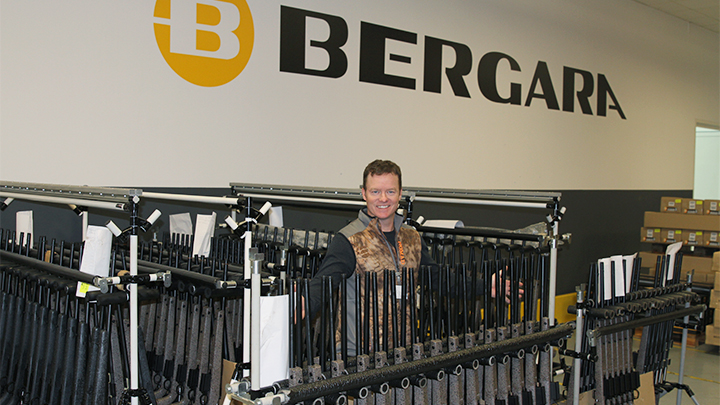
Weighing a hunter-friendly 7.6 pounds, the B-14 Ridge rifle I used is not so heavy it is tough to carry but not so light that it is difficult to shoot. The rifle features the company’s proprietary B-14 action that’s inherently strong, smooth, accurate and reliable with its sliding plate extractor and coned bolt nose. Affixed to it is a triple-honed, No. 5-contour Bergara barrel that’s slightly heavier than other B-14 models so remains accurate even as it heats. But the ¾-inch accuracy I experienced (a 1-MOA guarantee is standard) is also a product of its pillar-bedded composite stock and excellent 3-pound trigger. A couple features I especially like are its slightly tacky SoftTouch stock and its threaded barrel that accepts a suppressor. Incredibly, this custom-feeling rifle can be purchased for around $800.
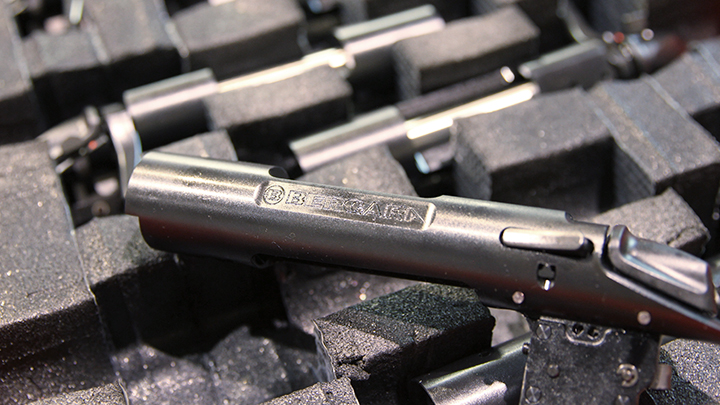
Each year the company continually challenges the U.S. gun industry with firearms that are as innovative as they are accurate and value-packed. The extensions of its B-14 Wilderness series include the Terrain, HMR, Ridge and Hunter models.


































